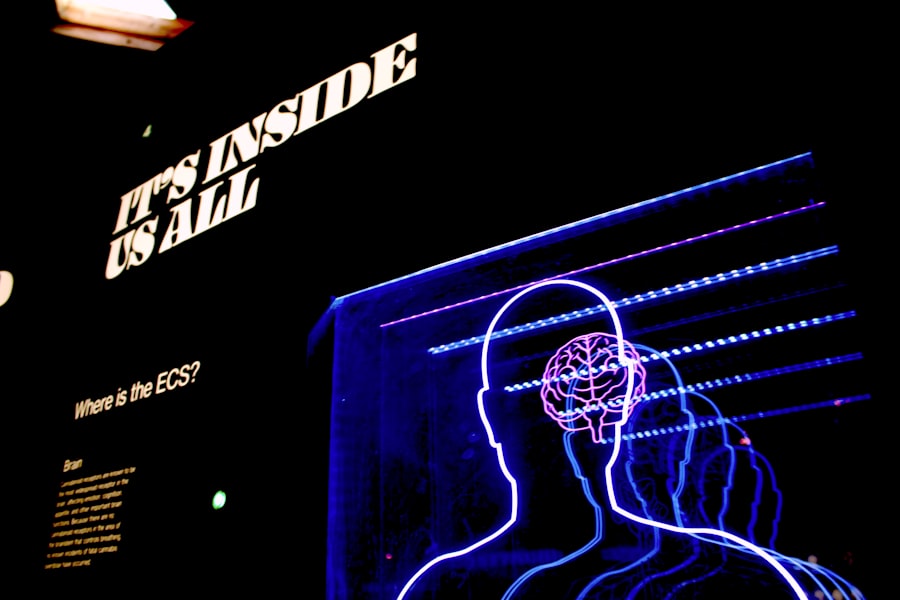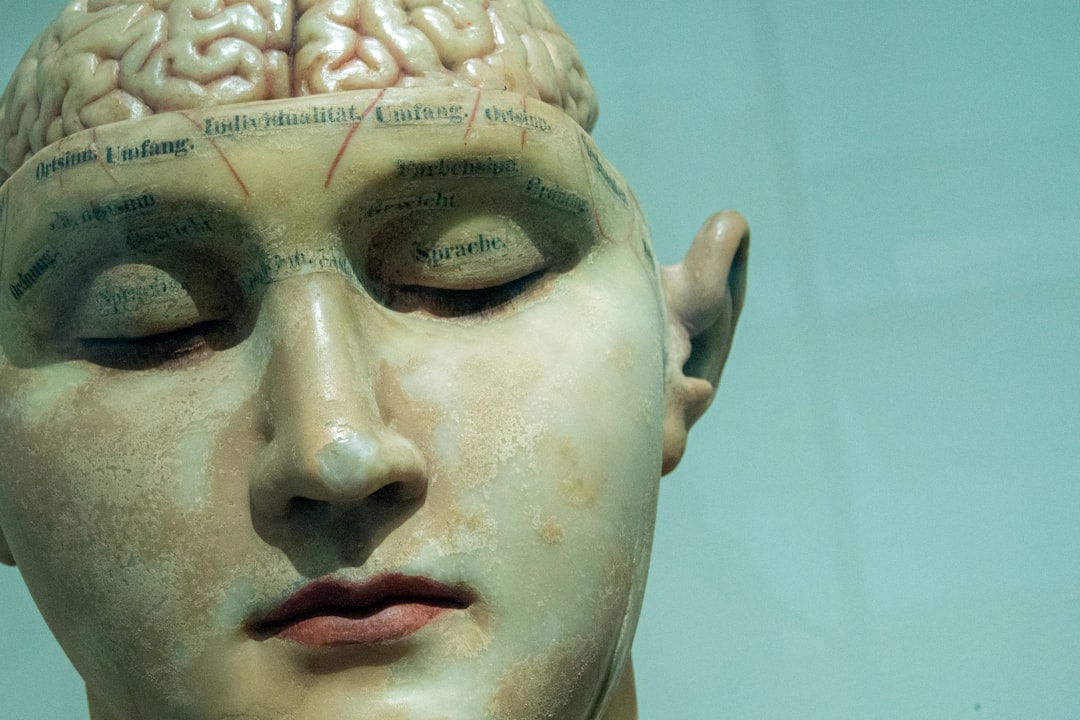Anxiety, depression, and bipolar disorder are three prevalent mental health conditions that significantly impact individuals’ lives. Anxiety is characterized by excessive worry, fear, or apprehension about future events or situations. It can manifest in various forms, including generalized anxiety disorder, panic disorder, and social anxiety disorder.
Individuals with anxiety often experience physical symptoms such as increased heart rate, sweating, and trembling, which can further exacerbate their feelings of distress. This condition can be debilitating, affecting one’s ability to function in daily life and maintain relationships. Depression, on the other hand, is marked by persistent feelings of sadness, hopelessness, and a lack of interest or pleasure in activities once enjoyed.
It can lead to significant changes in appetite, sleep patterns, and energy levels. Major depressive disorder is one of the most common forms of depression and can severely impair an individual’s ability to work, study, or engage in social activities. The emotional pain associated with depression can be overwhelming, often leading to feelings of worthlessness or guilt.
Bipolar disorder is a complex mental health condition characterized by extreme mood swings that include emotional highs (mania or hypomania) and lows (depression). These mood episodes can vary in duration and intensity, with some individuals experiencing rapid cycling between moods. During manic phases, individuals may feel euphoric, overly energetic, or irritable, often engaging in risky behaviors.
Conversely, depressive episodes can mirror those experienced in major depression. Understanding these disorders is crucial for recognizing their symptoms and seeking appropriate help. Check out the latest health tips and information at Lifemedicallab.
Key Takeaways
- Anxiety is a feeling of worry, nervousness, or unease about something with an uncertain outcome.
- Symptoms of anxiety can include excessive worrying, restlessness, and difficulty concentrating.
- Depression is a mood disorder that causes a persistent feeling of sadness and loss of interest in activities.
- Symptoms of depression can include feelings of hopelessness, changes in appetite, and difficulty sleeping.
- Bipolar disorder is a mental health condition characterized by extreme mood swings, including emotional highs and lows.
Understanding the Symptoms of Anxiety
The symptoms of anxiety can vary widely among individuals but generally encompass both psychological and physical manifestations. Psychologically, individuals may experience persistent worry about various aspects of life, including work performance, health concerns, or social interactions. This constant state of worry can lead to difficulty concentrating and a sense of impending doom.
Cognitive distortions often accompany anxiety, where individuals may catastrophize situations or believe that the worst possible outcome is inevitable. Physically, anxiety can trigger a range of symptoms that may include rapid heartbeat, shortness of breath, muscle tension, and gastrointestinal issues. These physical manifestations can create a feedback loop; the more one worries about these symptoms, the more intense they become.
For instance, someone who experiences a racing heart may interpret it as a sign of an impending panic attack, leading to further anxiety. Additionally, anxiety disorders can lead to avoidance behaviors where individuals steer clear of situations that trigger their anxiety, ultimately limiting their experiences and opportunities.
Recognizing the Symptoms of Depression

Recognizing the symptoms of depression is essential for early intervention and treatment. The hallmark symptom of depression is a pervasive low mood that lasts for an extended period—often for weeks or months. Individuals may find themselves feeling sad or empty most of the day and may struggle to find joy in activities they once loved.
This emotional numbness can lead to withdrawal from social interactions and a decline in relationships. In addition to emotional symptoms, depression often manifests physically. Changes in appetite are common; some individuals may experience significant weight loss due to a lack of interest in food, while others may overeat as a form of comfort.
Sleep disturbances are also prevalent; insomnia or hypersomnia can occur as individuals grapple with racing thoughts or overwhelming fatigue.
Cognitive symptoms such as difficulty concentrating or making decisions are also frequent complaints among those suffering from depression.
These combined effects can create a cycle that perpetuates the disorder, making it increasingly challenging for individuals to seek help or engage in daily activities.
Identifying the Symptoms of Bipolar Disorder
| Symptom | Description |
|---|---|
| Manic Episode | Elevated mood, inflated self-esteem, decreased need for sleep, racing thoughts, and impulsive behavior |
| Depressive Episode | Sadness, hopelessness, loss of interest in activities, changes in appetite or weight, and thoughts of death or suicide |
| Hypomanic Episode | Less severe form of mania, characterized by euphoria, increased energy, and irritability |
| Mixed Episode | Symptoms of both mania and depression occurring at the same time |
| Psychosis | Loss of touch with reality, experiencing delusions or hallucinations |
Identifying the symptoms of bipolar disorder requires an understanding of its distinct mood episodes: manic/hypomanic and depressive phases. During manic episodes, individuals may exhibit heightened energy levels, increased talkativeness, and an inflated sense of self-esteem. They might engage in impulsive behaviors such as spending sprees or risky sexual encounters without considering the consequences.
This phase can lead to significant disruptions in personal and professional life due to erratic behavior. In contrast, depressive episodes in bipolar disorder share similarities with major depressive disorder. Individuals may experience profound sadness, fatigue, and feelings of hopelessness.
They might withdraw from social activities and struggle with daily tasks due to overwhelming lethargy. Some individuals may also experience mixed episodes where symptoms of both mania and depression occur simultaneously. This complexity makes bipolar disorder particularly challenging to diagnose and treat effectively.
Exploring the Causes of Anxiety, Depression, and Bipolar Disorder
The causes of anxiety, depression, and bipolar disorder are multifaceted and often involve a combination of genetic, biological, environmental, and psychological factors. Research indicates that genetics play a significant role; individuals with a family history of these disorders are at a higher risk of developing them themselves. Neurotransmitter imbalances—particularly involving serotonin, norepinephrine, and dopamine—are also implicated in these conditions.
For instance, low levels of serotonin are commonly associated with depression. Environmental factors such as trauma, chronic stress, or significant life changes can trigger or exacerbate symptoms of these disorders. For example, someone who has experienced childhood trauma may develop anxiety or depression later in life as a response to stressors.
Psychological factors such as personality traits—like perfectionism or low self-esteem—can also contribute to the development of these conditions. Understanding these causes is crucial for developing effective prevention strategies and treatment plans.
Discussing the Impact of Anxiety, Depression, and Bipolar Disorder on Daily Life

The impact of anxiety, depression, and bipolar disorder on daily life can be profound and far-reaching. Individuals grappling with anxiety may find it challenging to perform routine tasks such as going to work or attending social gatherings due to overwhelming fear or panic. This avoidance behavior can lead to isolation and exacerbate feelings of loneliness and despair.
The constant state of hyperarousal associated with anxiety can also result in chronic fatigue and difficulty concentrating. For those living with depression, the effects on daily functioning can be equally debilitating. Simple tasks like showering or preparing meals may feel insurmountable when engulfed by feelings of hopelessness.
Relationships often suffer as loved ones may struggle to understand the emotional turmoil faced by someone with depression. In the case of bipolar disorder, the unpredictable nature of mood swings can disrupt personal relationships and professional commitments. Friends and family may find it difficult to cope with the erratic behavior during manic phases or the withdrawal during depressive episodes.
Addressing the Stigma Surrounding Mental Illness
Stigma surrounding mental illness remains a significant barrier to seeking help for conditions like anxiety, depression, and bipolar disorder. Many individuals fear being judged or misunderstood by society if they disclose their struggles with mental health issues. This stigma can manifest in various ways—ranging from negative stereotypes perpetuated by media portrayals to personal experiences of discrimination in workplaces or social settings.
Addressing this stigma requires a concerted effort from society as a whole. Education plays a crucial role; increasing awareness about mental health conditions can help dispel myths and foster understanding among the general public. Initiatives that promote open conversations about mental health can encourage individuals to seek help without fear of judgment.
Advocacy groups are also instrumental in challenging societal norms that perpetuate stigma and promoting policies that support mental health awareness.
Seeking Help for Anxiety, Depression, and Bipolar Disorder
Seeking help for anxiety, depression, and bipolar disorder is a critical step toward recovery but often comes with its own set of challenges. Many individuals may hesitate to reach out due to feelings of shame or fear that they will not be taken seriously. However, recognizing that these conditions are legitimate medical issues is essential for encouraging individuals to seek support from healthcare professionals.
Therapists and counselors trained in cognitive-behavioral therapy (CBT) or dialectical behavior therapy (DBT) can provide valuable tools for managing symptoms effectively. Support groups also offer a sense of community where individuals can share their experiences and learn from one another’s journeys toward healing. It is important for those struggling with mental health issues to remember that they are not alone; help is available through various channels.
Exploring Treatment Options for Anxiety, Depression, and Bipolar Disorder
Treatment options for anxiety, depression, and bipolar disorder are diverse and tailored to meet individual needs. Psychotherapy remains one of the most effective treatments for these conditions; cognitive-behavioral therapy (CBT) has been shown to help individuals identify negative thought patterns and develop coping strategies. For some individuals with severe symptoms or those who do not respond well to therapy alone, medication may be prescribed.
Antidepressants such as selective serotonin reuptake inhibitors (SSRIs) are commonly used to treat depression and anxiety disorders by balancing neurotransmitter levels in the brain. For bipolar disorder, mood stabilizers like lithium are often prescribed to help regulate mood swings effectively. It is essential for individuals to work closely with their healthcare providers to find the right combination of therapies that work best for them.
Supporting Loved Ones with Anxiety, Depression, and Bipolar Disorder
Supporting loved ones who are dealing with anxiety, depression, or bipolar disorder requires empathy and understanding. It is crucial for friends and family members to educate themselves about these conditions so they can provide informed support without judgment. Active listening is an essential skill; allowing loved ones to express their feelings without interruption fosters an environment where they feel safe sharing their struggles.
Encouraging loved ones to seek professional help is also vital; however, it should be approached delicately to avoid overwhelming them further.
Offering practical support—such as accompanying them to appointments or helping with daily tasks—can alleviate some burdens they may face during difficult times.
Ultimately, being present and showing unconditional love can make a significant difference in their journey toward recovery.
Promoting Mental Health Awareness and Advocacy
Promoting mental health awareness is essential for creating a society that values emotional well-being alongside physical health. Advocacy efforts aimed at increasing public understanding of mental health issues can lead to more comprehensive support systems within communities. Schools play a pivotal role in this initiative; incorporating mental health education into curricula can equip young people with the knowledge they need to recognize signs of distress in themselves and others.
Community programs that focus on mental health awareness campaigns can also foster dialogue around these issues while providing resources for those in need. Social media platforms have become powerful tools for advocacy; campaigns that share personal stories about mental health struggles can humanize these experiences and encourage others to seek help without fear of stigma. By working together as a society to promote mental health awareness and advocacy efforts, we can create an environment where individuals feel empowered to prioritize their mental well-being without hesitation.
If you are interested in learning more about mental health and emotional health, you may want to check out this article on comparing and contrasting mental health and emotional health. Understanding the differences between these two aspects of well-being can help individuals better manage their mental health. Additionally, for those struggling with panic attacks and depression, there is an insightful article on understanding panic attacks and depression together. This article provides valuable information on how these two conditions can be interconnected and how to seek help. And if you are looking for local teen therapy options, you may find this article on finding local teen therapy near you for expert support helpful in connecting with the right resources.
FAQs
What are the different types of mental illness?
There are several types of mental illness, including anxiety disorders, mood disorders (such as depression and bipolar disorder), psychotic disorders (such as schizophrenia), eating disorders, and personality disorders.
What are anxiety disorders?
Anxiety disorders are a group of mental illnesses characterized by excessive worry, fear, or nervousness. Common types of anxiety disorders include generalized anxiety disorder, panic disorder, and social anxiety disorder.
What are mood disorders?
Mood disorders are mental illnesses that primarily affect a person’s emotional state. They include depression, bipolar disorder, and seasonal affective disorder.
What are psychotic disorders?
Psychotic disorders are severe mental illnesses that cause abnormal thinking and perceptions. The most well-known psychotic disorder is schizophrenia.
What are eating disorders?
Eating disorders are mental illnesses characterized by abnormal eating habits and a preoccupation with body weight and shape. Common eating disorders include anorexia nervosa, bulimia nervosa, and binge-eating disorder.
What are personality disorders?
Personality disorders are a group of mental illnesses characterized by unhealthy patterns of thinking, behaving, and relating to others. Examples of personality disorders include borderline personality disorder, narcissistic personality disorder, and antisocial personality disorder.

